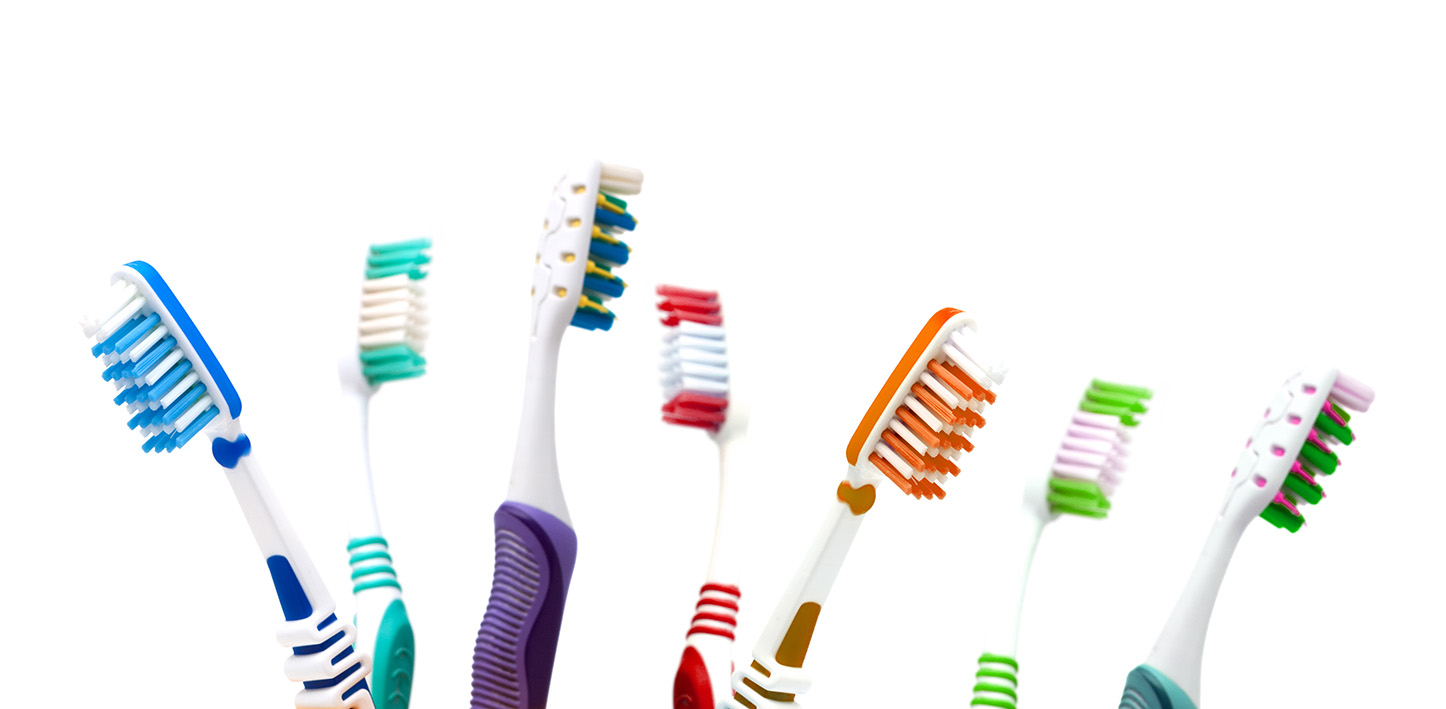Really, Though—Which Toothbrush?
Really, Though—Which Toothbrush?
You probably remember the ads. A model stood smiling in her bathroom, teeth whiter than her robes or sparkling vanity. There were flashes of digitally animated rows of teeth getting brushed to perfection by a full-headed toothbrush. To say the ads were satisfying would be an understatement.
Toothbrush ads these days focus more on the lifestyle built around good oral hygiene than the act of brushing itself. But if you were watching TV in the 1990s and 2000s, you were probably bewitched more than once by the animated close-ups of toothbrush heads scouring away every molecule of plaque and food.
The funny thing is, there was never a compelling argument made for which toothbrush is really better. How do all the options compare?
Toothbrush bristles: hard, medium, or soft
You aren’t the only one who’s wondered about this—there have been formal studies done, too. Research has shown that medium and hard-bristled toothbrushes do remove more plaque, but soft-bristled toothbrushes still work effectively.
Hard and medium bristled toothbrushes do cause more of the tiny abrasions to your gums that lead to other types of gum damage. However, if you’re careful when brushing, you can use hard and medium bristles to get a more gratifying clean around molars and pre-molar areas.
All shapes and sizes
There’s been study around the size and shapes of toothbrush bristles, too, especially with the boom of fancy designs and built-in gum stimulators. Most brushes today have varying lengths of bristles, but does it really make a difference?
Some soft-bristled toothbrushes achieve their “softness” with tiny, split-end bristles that dance and sweep over the surface of each tooth. Hard or medium-bristled brushes are more effective with varying heights of bristles, which—in combination with their stiffness—helps you clean uneven surfaces and tight spaces.
The shape and size of a toothbrush head make for more options, with brushes ranging from rectangular bases to pointy-tipped diamonds. Unsurprisingly, the diamond-head design is better for getting those hard-to-reach spaces. Smaller-headed toothbrushes might feel less effective, but they do allow for better dexterity in reaching and cleaning every tooth.

The gummy question
The rubbery gum stimulators along the sides of certain toothbrushes offer many benefits, though you’ll have trouble finding them on a toothbrush that costs less than $6. Not only are these rubber protuberances good for poking out big pieces of leftovers, but they also give you a warning tickle if you’re getting aggressive too close to your gums. Just think of the rumble strips on the highway—it’s the same idea.
Gum stimulators are also good for promoting blood flow to keep your gums healthy. In the end, toothbrushes with varied bristle heights and other features do have their advantages, tempting though it is to throw that $1 flat-head toothbrush in your cart. Take a good look before buying your brush—the more you get from your oral hygiene routine, the more likely you are to keep it.
The real debate: electric spin versus manual
There’s a big debate on electric versus spin toothbrushes, but we’d better start simply comparing “manual” and “other.” Do you want a brush that spins or oscillates on its own, or one you move yourself?
The clear advantage to any spin or electric option is that the brush does the moving for you, and much faster than you could comfortably keep up yourself. This friction offers such a quick brush (and polish) that you might not be able to resist the squeaky-clean feel these brushes give you.
When it comes to head size and varying bristle length, however, manual brushes come out ahead. Half this article was just devoted to the wonder that is the manual toothbrush market with all its variety. There must be be some effective toothbrushes behind all that demand!
Manual brushes also have the advantages that they don’t use batteries or need to be charged, and are easier to travel with.
Really, though, which toothbrush? This question comes back to you. Why is there demand for such variety in a toothbrush? Because some of these features really do make a difference. Depending on what you like, your oral hygiene and your lifestyle, the answer will be clear enough once you take a good look at the options.





